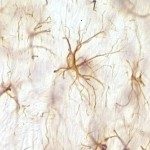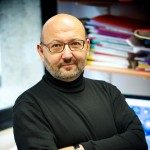Link to Pubmed [PMID] – 3392217
J. Clin. Invest. 1988 Jul;82(1):7-12
Penicilloyl groups, which have been connected to penicillin allergy, are derived from penicillin by cleavage of the beta lactam ring and bind covalently to proteins. Fixation of penicilloyl groups was studied in seven patients given large amounts of penicillin. Penicilloyl groups were found essentially on the albumin molecule at sites not accessible to anti-penicilloyl antibodies, except after pronase digestion. The amount of penicilloyl groups was proportional to the cumulated doses of penicillin. The decline of penicilloyl groups with time after treatment interruption was exponential. The half-life of penicilloylated albumin was lower than or equal to that of normal albumin. The presence of anti-penicilloyl antibodies was demonstrated in 19 out of 34 penicillin-treated patients (including the seven mentioned above). The relative scarcity of penicillin allergy as compared with the frequent occurrence of anti-penicilloyl antibodies may be partly related to unavailable sites of penicilloyl groups within the albumin molecule.

